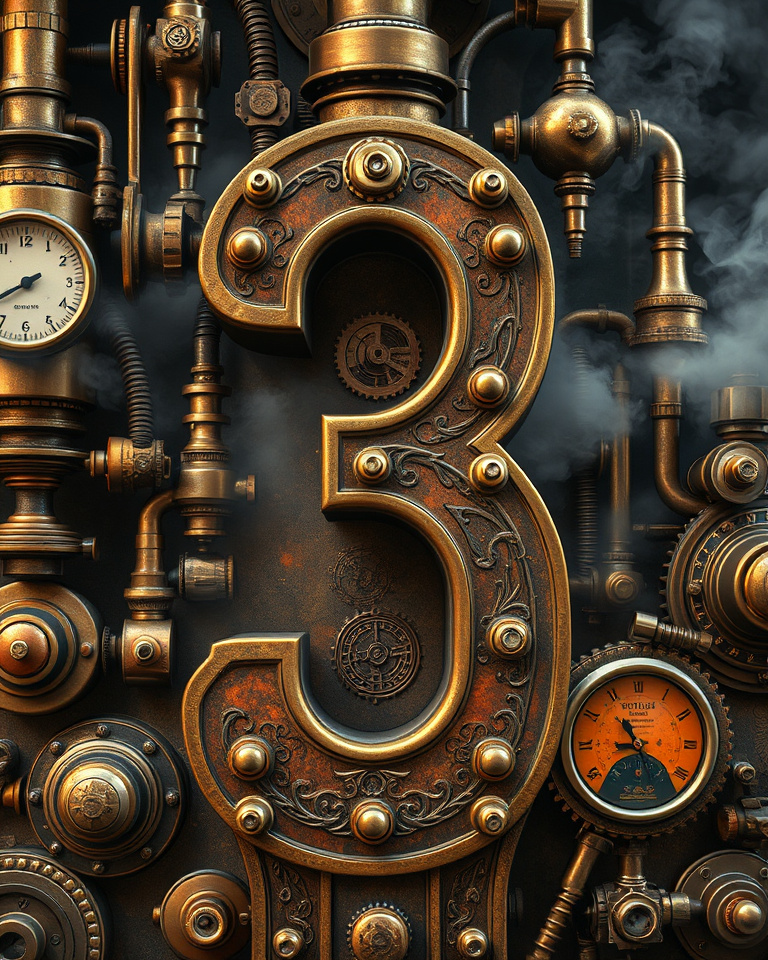
Triple Threat
Why Life, Luck, and the People Love Threes
You’ve probably heard it a thousand times: Good things come in Threes. So look, we need to talk about the number Three. It’s everywhere. It’s in your science books, your favorite movies, and even lurking in the shadows of your grandma’s superstitions. The number Three has infiltrated every corner of our existence so thoroughly that if it had a LinkedIn profile, it would have an absurd number of endorsements. But why? Why is Three the golden child of numbers? Why not Two? Or Four? What makes Three so universally irresistible?
Well, grab a cup of coffee (or, you know, Three), because we’re about to dive headfirst into the phenomenon of Three and why it might just be the secret sauce of the universe.
Science and Nature: The Universe’s Love Affair with Three
If you think Three is just some arbitrary number humans decided was cool, think again. Science and nature have been showing off with it since the beginning of time. For starters, matter itself exists in Three Primary States: Solid, Liquid, And Gas. That’s right—everything you touch, drink, and breathe exists because the universe is obsessed with Three.
And don’t even get me started on atoms. These tiny powerhouses are made up of Three Fundamental Particles: Protons, Neutrons, And Electrons. Oh, and let’s not forget DNA—life’s ultimate blueprint—where genetic information is coded in Triplet Codons. Basically, if you’re alive and breathing, you owe Three a thank-you note.
Even our own planet is on the Three-Train. Earth orbits the sun in a solar system structured into Three Zones: The Terrestrial Planets, The Asteroid Belt, and the Gas Giants. And speaking of Earth, it’s neatly divided into Three Layers: The Crust, Mantle, And Core. The universe didn’t just randomly pick Three—it built itself around it.
Storytelling, Comedy, and Superstitions: The Magic of Three
Ever wondered why jokes always seem funnier in Three parts? Or why fairy tales adore trios? It’s because Three is the sweet spot. If you’ve ever told a joke, congrats—you’ve unknowingly participated in the ancient comedic ritual known as the Rule of Three. Setup, Reinforcement, Punchline. That’s the rhythm that makes everything from stand-up comedy to sitcoms work.
And storytelling? Oh boy. Ever heard of The Three Little Pigs? Goldilocks and the Three Bears? The Three Musketeers? You’re catching on. Hollywood has also cracked the code, making trilogies the ultimate money-making formula. Why make one movie when you can make Three and keep the fans begging for more?
Then there’s the whole “bad things happen in Threes” superstition. If one appliance in your house breaks down, you immediately brace yourself for Two more. And knocking on wood Three times for luck? That’s another Three-Based habit you probably follow without even realizing it.
The Rule of Three in Mythology and Religion: Divine or Coincidence?
If there’s one thing religions and mythologies around the world can agree on, it’s that Three is the number of the Divine, The Balanced, The Complete. Take Hinduism: its sacred trinity consists of Brahma (the creator), Vishnu (the preserver), and Shiva (the destroyer). Buddhism follows suit with the Three Jewels: Buddha, Dharma, and Sangha.
Islam’s got Three Holy Sites, and Judaism honors the Three Patriarchs: Abraham, Isaac, and Jacob. Even ancient Egypt was on board, with its Powerful Trio of Osiris, Isis, and Horus. Meanwhile, Norse mythology gave us the Three Norns—female beings who ruled fate itself. If the gods themselves are structured around Three, maybe we should start paying closer attention.
Shintoism keeps the pattern going with Japan’s Three Sacred Treasures—Mirror, Jewel, and Sword. And Norse mythology rounds it out with its Three Realms: Asgard, Midgard, and Helheim. Apparently, even the afterlife needs a solid Three-Part Structure.
So, What’s the Deal? Why Three?
Three isn’t just a number—it’s a Pattern, A Rhythm, A Balance. It represents wholeness and resolution. That’s why we have Three-Act Plays, Three-Course Meals, and why our parents had to tell us things at least Three times before we actually listened.
The next time someone casually says, “Third time’s the charm,” don’t just nod and move on. Understand that they’re tapping into something ancient, something universal, and—let’s be honest—probably something just a little bit magical.
And with that, I’ll leave you with this final thought: If Three weren’t the best number ever, would I have even bothered to write this? Exactly.
Three cheers for Three! 🎉
